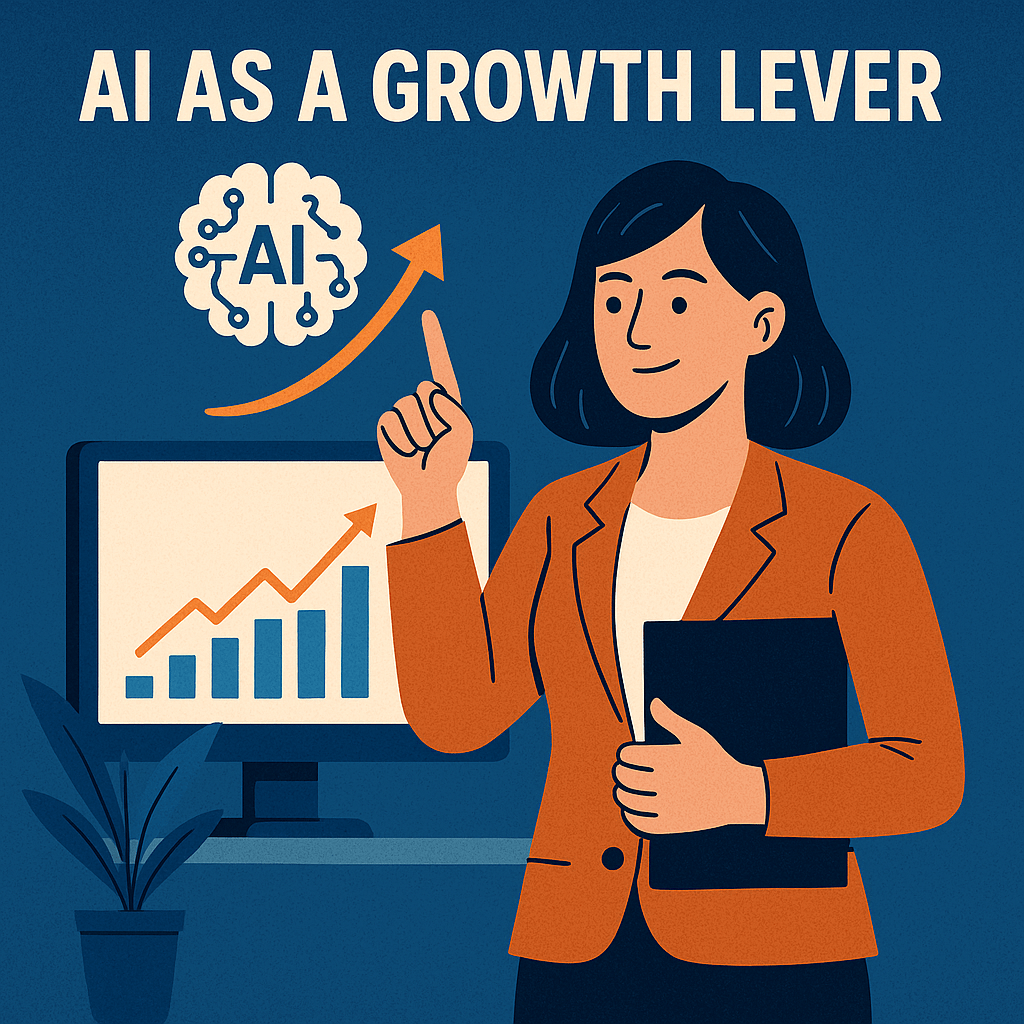
AI is often sold as a way to cut costs and save time. And while that’s true, it’s only half the story. The businesses that see the biggest impact are the ones that use AI as a growth lever, not just an efficiency tool.
When you focus on empowerment, AI becomes a driver of innovation and long‑term success.
Here are a few steps you can take to make that shift and unlock AI’s real potential in your business.
1. Redefine productivity to use AI as a growth lever
If your only measure of productivity is doing the same work faster, you’re limiting what AI can do for you.
In an efficiency‑only view, productivity means processing more transactions, replying to more queries or producing more reports in less time. That’s fine, but it’s incremental.
When looking through the empowerment lens, productivity means enabling your people to do work they couldn’t do before. For example, they might analyse customer trends in real time or model future scenarios before making big decisions. It’s about giving them the tools to:
- Analyse customer trends in real time
- Model future scenarios before making big decisions
- Turn ideas into tested prototypes without weeks of manual work
When AI gives your team these kinds of capabilities, productivity becomes more about possibilities, not just speed.
2. Free up time for high‑value work
Automation isn’t just about saving hours. As a result, it creates space for innovation, strategy and deep thinking.
Ask yourself: If your team could claw back 5–10 hours a week, how would you want them to use it?
The best leaders don’t fill that time with more admin. They use it to focus on:
- Improving customer experiences
- Exploring new markets
- Strengthening relationships with partners and clients
- Developing new products and services
This is where AI becomes a strategic advantage, not just an operational one.
3. Using AI as a growth lever to unlock new capabilities
Efficiency is about doing more with less. However, empowerment is about doing things you couldn’t do before.
Think beyond “how can AI speed this up?” and ask “what could we do if we had the capacity to think bigger?”
Examples include:
- Reviewing every customer interaction for quality insights
- Testing marketing campaigns on virtual audiences before going live
- Identifying opportunities in data that would take a human weeks to uncover
This is the space where AI as a growth lever transforms from being a tool and into a driver of growth. According to McKinsey research, businesses that focus AI on strategic growth outperform those using it only for efficiency.
4. Build a culture of empowerment
Empowerment doesn’t happen by accident. It needs to be built into your leadership approach.
Encourage your team to see AI as a partner, not a threat.
Ask them where it could make their work more impactful or help them achieve more ambitious goals.
When people feel confident that AI is there to support, not replace them, they’re far more likely to experiment, share ideas and push boundaries.
5. Measure what matters
If you only measure AI by the time or money it saves, you’ll undervalue its impact.
Look for indicators like:
- Faster time‑to‑market for new ideas
- Higher customer satisfaction
- Better decision‑making through richer insights
- Increased collaboration between teams
These measures show whether AI is driving growth. In addition, they help you track its impact beyond efficiency alone.
Key takeaway:
Efficiency is a quick win. Empowerment is a long‑term strategy.
Shift your focus and you’ll start seeing AI as a growth lever for innovation and not just a cost‑cutting tool.
💬 Your turn:
Where would you like to see AI take your business beyond simple efficiency gains?
📌 PS: My AI in Business course launches at the end of this month. In it, we’ll cover how to go beyond efficiency and use AI to transform your strategy.
